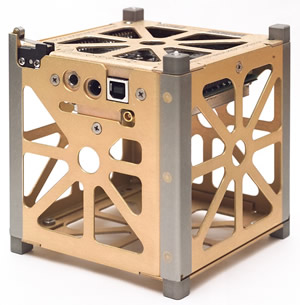This week a Dnepr rocket launched from Russia broke the record for the most payloads delivered to orbit in a single mission, launching 32 different objects into space. The day before, a US rocket delivered 29 satellites into orbit. But why are we launching so many objects into space?
While it may seem like large number most of these objects were CubeSats - tiny satellites with the same volume (1 litre) as a fruit juice carton.
These satellites offer a relatively cheap way to test new equipment and technology in space, by filling up the normally small amount of space left in a rocket after a major payload has been loaded. Although it's estimated that each CubeSat costs $40,000 in fuel, when you compare this to the $115 million cost of a rocket it does seem an economical way to allow students and other educational groups an opportunity to test out what could prove to be the future of space travel.
CubeSats are ejected from a rocket when the nose cone breaks off. Although they don't have thrusters, they are travelling at a sufficiently high speed to enter a low earth orbit, where they can remain for around a month before friction with the Earth's atmosphere causes them to slow down and burn up as they fall back to Earth.
As part of the launch this week, the world's smallest ever functioning satellite, a temperature sensor called the Pocket PUCP Sensor, was deployed. At 8cm long and weighing only 97g it offers an opportunity to miniaturise existing technology which could save fuel and cost on future missions.
British involvement in the CubeSats launched included Funcube1, which school children can receive messages from using only a USB dongle and a small aerial; the Cinema 2 and 3 satellites, which Imperial College London has developed, and a mini-magnetometer called Magic for to study the Earth's magnetic field.
- Previous Remembering Fred Sanger
- Next World Toilet Day









Comments
Add a comment